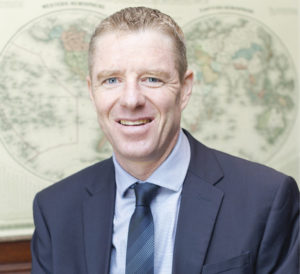The power of compound interest is a miraculous thing when it works in your favour, but it is disastrous when it works against you.
All manner of laws and regulations have been passed in South Africa to better protect investors from the predations of retirement fund administrators and managers who have developed some ingenious ways of squeezing an extra fraction of a percent, and in many cases much more, out of your savings. Over the long term, this adds up to a tidy sum.
While there is no doubt that some of the more rapacious practices of the past have been stymied by these laws and regulations, from my experience, many retirement fund administrators and managers just got smarter at disguising their parasitic behaviour. This behaviour renders these laws and regulations meaningless.
High fees are disguised in a variety of ways
The average person is simply not equipped to detect when they are being fleeced. That’s because the fees are disguised in a variety of ways. The retirement fund industry has become a game of smoke and mirrors. Company CEOs or chief financial officers are bamboozled by retirement fund investment rankings showing Fund X in the upper quartile. What they are not seeing is the slow but inexorable rape of their employees’ savings.
A few years ago National Treasury released a paper entitled “Charges in South African retirement funds” which should have shamed the industry but apparently didn’t.
South African fee structures compare poorly with our overseas peers; they lack transparency and are not particularly comparable, especially when it comes to umbrella funds. Nor are they readily “portable” (easy to migrate to a new fund). Pricing is so complex you need a professional to explain the costs and terms. Making matters worse is the fact that intermediaries are incentivised to sell the products of specific service providers, creating an unnatural swing towards high-cost funds.
CEOs and their executives should be asking tough questions of their retirement fund administrators, managers and advisors.
The retirement industry is awash with flexible funds and differentiated products and services, creating such a complex and layered landscape that no-one can make sense of it. You might be tempted to think that this is the magic of the free market at work, but it has the pernicious effect of embedding the incumbents, allowing outrageous fees to pass unnoticed and raising industry barriers to entry. The actual effect is to stifle price competition.
An actual example
Let me illustrate by way of an example. We recently did an exercise for a JSE-listed company with roughly R300-million in retirement assets and more than 500 members. We did a cost comparison to see what the fund would look like if different default investment options had been availed. What we found was a potential saving of over R1-million a year.
On a R300-million fund that’s not much, you might say. But it is when you compound it over 20, 30 or 40 years. One could question the role of the independent trustees of the umbrella fund in question in this instance in ensuring value for money for the members.
The South African retirement industry in a nutshell
The South African retirement industry is worth in excess of R3-trillion in assets. That’s a huge sum of money, with nearly two-thirds of that tied up in the Government Employee Pension Fund (GEPF), administered by the Public Investment Corporation (PIC). Though most of these assets are administered by the PIC, the actual investment function, for the most part, is farmed out to private-sector asset managers. Judging by cost disclosures on unit trusts, the average total cost runs at between 2-3% of assets per year.
If one adds all the costs of running a retirement fund, that amounts to in excess of R100-billion a year in fees going to administrators, fund managers and others in the retirement fund ecosystem.
Up to 40% of your retirement has been swallowed in fees
Put another way, these outlandish fees could cost you 40% of your retirement. The answer is not necessarily to opt for the cheapest but rather ensure that members are receiving value for money, depending on the type of product or solution. Much has been written about passive investment but even there the difference between the lowest and highest cost provider is more than double.
However, the focus has to be on the total cost across the full spectrum. Paying the industry average of 2-3% of total cost versus a more palatable cost of half this amount could benefit a member who is saving R3 000 per month for 40 years, to the tune of close to R5-million.
In reality, this is what is happening in the South African retirement fund industry.
Retirees have to live on less than 30% of their pre-retirement salaries
Relying on industry participants, let’s put this in some kind of context. In the retirement industry, we talk about the net replacement ratio, which is a person’s projected income at retirement as a percentage of their salary before retirement. Most South Africans will retire with less than 30% of their pre-retirement salaries.
You need to put away between 15% and 18% of your gross monthly salary each month in order to accumulate enough money to retire on.
How independent are the consultants?
New Treasury regulations introduced in August 2018 require financial service providers to offer default investment solutions for their funds. They must also provide counselling to members when they retire, leave the fund or make choices within the fund.
The question then arises: who will provide this counselling? The service providers? Or independent counsellors with no financial ties to the product providers?
You need to put away between 15% and 18% of your gross monthly salary each month in order to accumulate enough money to retire on.
This is no small matter. If we are going to rely on service providers to counsel members, you can be sure that the thrust of this advice will be tainted by conflicts of interest. The last thing a financial service provider wants is to point to the benefits of a competing fund.
Despite a slew of laws and regulations intended to keep the retirement industry honest, there are too many loopholes and financial ties, backed by clever lawyers, to make this a reality. Hence, much of my time is spent educating CEOs and chief financial officers on the reality of the retirement fund industry. Executives have a fiduciary duty to their employees. Why squander up to 40% of their retirement funds on bloated fees?
Allowing service providers to manage conflicts is like leaving children to run amok in a candy store. The regulators should have zero tolerance for any conflict of interest.
Asking the tough questions
CEOs and their executives should be asking tough questions of their retirement fund administrators, managers and advisors. Why is the all-in cost on some umbrella funds 1% and others 3% of total assets? Why do some employers even entertain advisors who are employed by the self-same product providers?
The day is fast approaching when members will quite justifiably ask how employers can allow such obvious conflicts to erode their savings.

The Financial Advisory and Intermediary Services (FAIS) Act requires full disclosure of costs sold by intermediaries/advisors, as well as those of competing products, but National Treasury doubts that this is being followed. There may be light at the end of the tunnel if the ASISA signatories abide by the Retirement Savings Cost Disclosure Standard that will become mandatory in all umbrella retirement fund quotations on 1 September 2019.
All of this deception and preying on the ignorance of the consumer works in favour of the product sellers. The retirement industry has become a shark tank, and South African savers are carcasses on which to feed. It is time to get some honest debate around some of these issues. The press reminds us daily of the failings and corruption in government, but very little is said about the gouging that is taking place in retirement funds.
That must change if we are to bring reform to a sector desperately in need of it and to provide retirees with the just rewards of their many decades of labour. As it stands, much of those rewards, and they are huge, go to someone else. It’s time we called “time out” on this nonsense.












